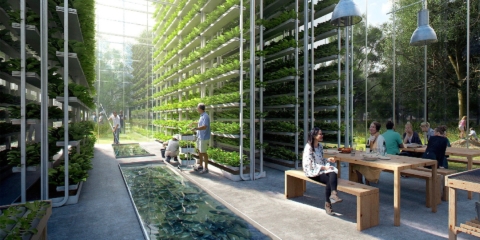Would you like to get notifications from Christian?
The use of artificial intelligence (AI) to generate new content has been one of the most exciting areas of research in recent years. With advancements in machine learning algorithms, it is now possible to use text or images to generate new images, audio, and even video. The ability to generate video has been particularly challenging due to the complexity and structure of video content. However, with the introduction of Gen-1, we are one step closer to achieving this goal.
Gen-1 is a video generation model that can synthesize new videos by applying the composition and style of an image or text prompt to the structure of your source video. It is like filming something new without filming anything at all. This groundbreaking technology is bringing the magic back to making movies by allowing users to turn any video into a compelling piece of footage.
There are five different modes of operation available with Gen-1. The first mode is Stylization, which allows users to transfer the style of any image or prompt to every frame of their video. This mode is ideal for creating videos with a specific aesthetic or mood.
The second mode is Storyboard, which turns mockups into fully stylized and animated renders. This mode is perfect for creating animated explainer videos or visuals for marketing campaigns.
The third mode is Mask, which allows users to isolate subjects in their video and modify them with simple text prompts. This mode helps create videos with custom messages or alter existing footage for comedic effects.
The fourth mode is Render, which turns untextured renders into realistic outputs by applying an input image or prompt. This mode is ideal for creating realistic animations for product demonstrations or architectural visualizations.
Finally, there is Customization, which unleashes the full power of Gen-1 by allowing users to customize the model for even higher fidelity results. With customization, users can fine-tune the parameters of the model to achieve the desired output. This mode is ideal for advanced users who want to achieve the best possible results with Gen-1.
Gen-1 is the new standard for video generation. Based on user studies, results from Gen-1 are preferred over existing methods for image-to-image and video-to-video translation. This is because of the wide variety of features and functionalities available with Gen-1, which makes it a versatile and powerful tool for generating high-quality videos.
However, video generation is challenging, and several challenges must be overcome. One of the most significant challenges is the conflict between user-provided content edits and structure representations. Insufficient disentanglement between the two aspects can lead to unsatisfactory results. To overcome this challenge, the creators of Gen-1 have developed a structure and content-guided video diffusion model that edits videos based on visual or textual descriptions of the desired output.
The creators of Gen-1 have also developed a novel guidance method that allows for precise control of temporal consistency. This is an essential feature that ensures that the generated video is consistent and smooth. The model is trained jointly on images and videos, which provides additional control over the output.
The results from experiments with Gen-1 are impressive, demonstrating fine-grained control over output characteristics, customization based on a few reference images, and a strong user preference towards results by the model. The ability to create videos with specific styles, messages, or visual effects without the need for expensive filming equipment or software is a game-changer for content creators and marketers.
Gen-1 is a significant step forward in the world of generative AI. Using existing videos and words to generate new videos from existing ones opens up possibilities for creative professionals. With the use of Gen-1, it is now possible to create high-quality videos for everyone.
Author: Christian Kromme
First Appeared On: Disruptive Inspiration Daily
Christian is a futurist and trendwatcher who speaks about the impact of exponential technologies like AI on organizations, people, and talents. Christian tailors his presentations to your audience’s specific industries and needs.




Embracing the advancements of technology and AI can enhance our humanity. We can focus on developing our unique talents and skills by automating mundane tasks and freeing up our time. As humans, we can adapt and learn, allowing us to evolve and stay relevant in a rapidly changing world constantly.


Organizations will need to be more fluid, dynamic, and adaptable: the ability to change and adjust in response to new situations and environments. We are on the cusp of a new era of organizations, ones that are more fluid and agile and which behave like swarms we see in nature.




In the future, 3D printing and generative design will allow for products to be designed in a more decentralized manner, and production will take place closer to the customer and fully on-demand. 3D printing technology will also allow for more customization and personalization of products.


The agricultural industry is ripe for disruption. Robotics, AI, and IoT are all technologies that have the potential to radically transform the way we grow food. In combination with vertical farming, these technologies could increase the efficiency and quality of agricultural products.

A human-centered society is one that puts people first and where technology is used to unite and empower people. It is a society that values biological life and dignity above all else. It is a society that recognizes the importance of human relationships and works to strengthen them. In a human-centered society, all members of the community are valued and treated with respect.


The future of healthcare is here. New technologies like AI, IoT, big data, and smart sensors make it possible to become the CEO of your own health. Imagine that your phone can listen to your voice and AI algorithms can detect small nuances in the tone of your voice that indicate specific diseases.
